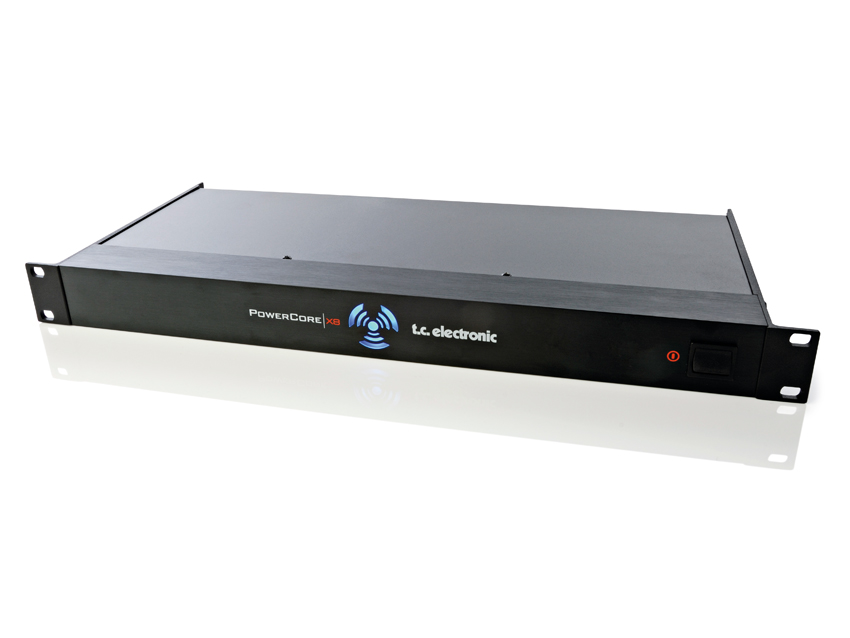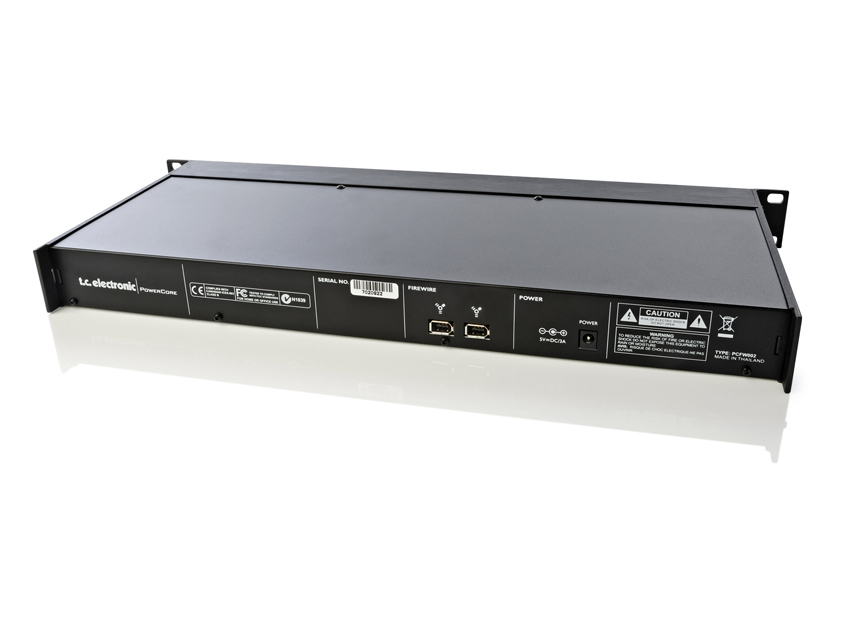MusicRadar Verdict
A slick, pro-spec device that gives you countless processing options.
Pros
- +
Very powerful. A great selection of bundled plug-ins. Expandable.
Cons
- -
It's expensive. You can't run VST/AU plug-ins on it.
MusicRadar's got your back

PowerCore X8

PowerCore
The X8 is the most powerful version yet of TC Electronic's PowerCore system. This can run signal-generating and processing plug-ins independently of the host computer, leaving your Mac or PC's resources free to do other things.
Physically, the X8 is unlikely to confound. The only front panel control is an on/off switch, though there's also an ultra-cool blue 'hello world!' light that pulsates and glows eerily, and power-on and error-detection LEDs. Round the back, there's an input for the supplied, trailing-wart PSU and dual FireWire sockets.
Theoretically, USB 2.0 has a higher data-transfer rate (480Mbps) than FireWire 400. However, and importantly for audio applications, FW400 has a better sustained data-transfer rate and uses a peer-to-peer protocol that's superior for the sound studio. That's why so many pro-audio and video devices incorporate FireWire connectivity. Compatible devices can be easily daisy-chained, meaning that multiple PowerCores can be hooked up for massive processing power.
Installing the X8 on Mac OS X or Windows is a cinch, although PC users may have to bung in a FireWire-enabling PCI card. Load the supplied drivers, plus control panel software, and you're away, but for a quick check to make sure both software and firmware versions are up to date.
This is all manageable in a slick control panel interface. You'll also find a machine-status indicator, showing what software is loaded, and a list of available plug-ins.
The plug-ins
You can't just go loading your VST or AU plug-ins into a PowerCore. You're restricted to audio software that's specifically developed for the platform, but thankfully, there's lots of it.
The X8 ships with a thoroughly splendid collection of plugs, beautifully designed and with soaraway sound.
One of our favourite plug-ins is ClassicVerb, a supremely capable, controllable and natural-sounding reverb. This offers 16 reverb types, colour-offset, high-cut filter and a wealth of presets.
Vintage compression comes courtesy of the 24/7C, a basic but effective dynamics processor, and it's possible to run multiple instances - up to six mono feeds - from just one PowerCore CPU. If you can't be bothered configuring that lot, skip to the Master X3, a multi-band compressor/limiter/expander that can finalise a mix in fine style.
Tubifex is on hand for amp modelling and speaker-sim duties, while DeNoise does what you'd imagine, offering five real-time restoration algorithms. EQsat delivers analogue-style 5-band equalisation.
Let's not forget ChorusDelay, either. This is based on the 1210 Spatial Expander and injects chorus, slap-back delay and flanging into the mix. It's time-cycle syncable to the BPM of your current project.
There's more modulation madness to be had from Filtroid, a dual-filter processor with envelope follower, while VoiceStrip and PowerCore CL are included for compression and gating. Compensator provides plug-in delay compensation and keeps everything in sync.
Summary
Given that the PowerCore X8 costs more than £1,100, you might be tempted to go out and buy a reasonably well-specified additional Mac laptop - or about three Windows workstations from PC World - and use them as plug-in workhorses instead. However, TC Electronic's device offers something different.
The X8's real power lies in its plug-ins: you get loads in the box, and you can buy more (from both TC and third-party developers) as and when you need them. If your mixes are going down the drain thanks to host system overload, it's a very good solution.
“I feel like that song had everything we needed to come back with”: Bring Me The Horizon’s Lee Malia on Shadow Moses, its riff and the secrets behind its tone, and why it was the right anthem at the right time
“I said, ‘Are we sure we can write a song about death?’”: The story of Mike + The Mechanics' classic No.1 The Living Years
“Without investment in music education our talent pipeline is at risk of drying up along with the huge opportunities for economic growth it brings”: UK Music draws up five point plan to “turbocharge” music education









